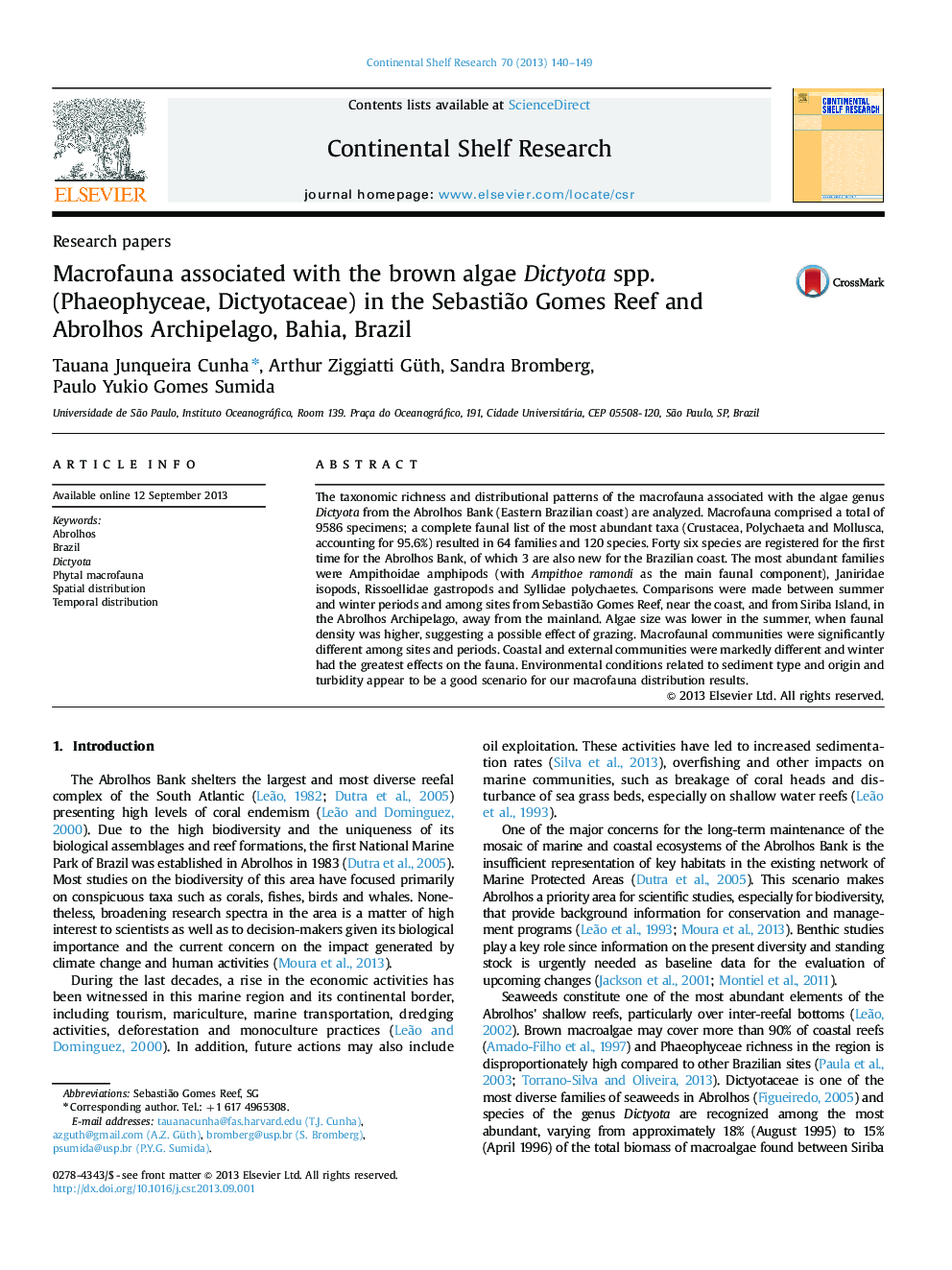| کد مقاله | کد نشریه | سال انتشار | مقاله انگلیسی | نسخه تمام متن |
|---|---|---|---|---|
| 4531988 | 1626142 | 2013 | 10 صفحه PDF | دانلود رایگان |

• The macrofauna associated with Dictyota from Abrolhos Bank (Brazil) was analyzed.
• Nearly 40% of macrofaunal taxa are new records for Abrolhos; 11 are endemic to Brazil.
• Algae were small when macrofaunal abundance was high, suggesting grazing impact.
• Macrofaunal community structure differed between seasons and distance from the coast.
• Macrofaunal distribution reflects regional sediment characteristics.
The taxonomic richness and distributional patterns of the macrofauna associated with the algae genus Dictyota from the Abrolhos Bank (Eastern Brazilian coast) are analyzed. Macrofauna comprised a total of 9586 specimens; a complete faunal list of the most abundant taxa (Crustacea, Polychaeta and Mollusca, accounting for 95.6%) resulted in 64 families and 120 species. Forty six species are registered for the first time for the Abrolhos Bank, of which 3 are also new for the Brazilian coast. The most abundant families were Ampithoidae amphipods (with Ampithoe ramondi as the main faunal component), Janiridae isopods, Rissoellidae gastropods and Syllidae polychaetes. Comparisons were made between summer and winter periods and among sites from Sebastião Gomes Reef, near the coast, and from Siriba Island, in the Abrolhos Archipelago, away from the mainland. Algae size was lower in the summer, when faunal density was higher, suggesting a possible effect of grazing. Macrofaunal communities were significantly different among sites and periods. Coastal and external communities were markedly different and winter had the greatest effects on the fauna. Environmental conditions related to sediment type and origin and turbidity appear to be a good scenario for our macrofauna distribution results.
Journal: Continental Shelf Research - Volume 70, 1 November 2013, Pages 140–149